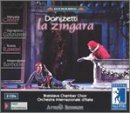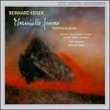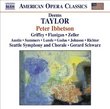| All Artists: Donizetti, Custer, Colaianni, Bosman Title: Zingara Members Wishing: 0 Total Copies: 0 Label: Dynamic Italy Original Release Date: 1/1/2002 Re-Release Date: 6/18/2002 Album Type: Import Genre: Classical Style: Opera & Classical Vocal Number of Discs: 2 SwapaCD Credits: 2 UPC: 675754521523 |
Search - Donizetti, Custer, Colaianni :: Zingara
 | Donizetti, Custer, Colaianni Zingara Genre: Classical
|
Larger Image |
CD DetailsSimilar CDs |
CD ReviewsEarly Donizetti Proves Entertaining dwadefoley | New York, New York United States | 08/13/2002 (3 out of 5 stars) "It is a bit puzzling that La Zingara has had to wait as long as it did for a modern hearing. We have already had an opportunity to visit the Donizetti of 1822 with Opera Rara's Zoraida di Granata. La Zingara followed this opera by a few months. Zoraida surprised many modern listeners with its maturity and craftsmanship, so that La Zingara should also be an excellent score will come as less of a shock. La Zingara would endure for almost four decades, and in fact was the earliest of Donizetti's operas to make it outside Italy. The effervescence and melodic inspiration of the score shone through in the serviceable performance at Martina Franca in 2001, which is the source of the present recording.
The Gypsy of the title is Argilla, a saucy girl who gleefully manipulates the rather dim-witted men around her - all to good ends, of course. A cheeky coloratura mezzo of the same lineage as Rosina and Isabella, she foils an assassination plot, unites the lovers Ines and Fernando despite the disapproval of Ines's father, contrives the release of an unjustly imprisoned man, and in the end discovers that she is the long-lost daughter of a duke. The plot is innocuous cliché fun, and the music is a sparkling and seamless mixture of Rossinian and Mayrian devices, with Donizetti's own special flair thrown into the mix. Of particular note is the highly complex and bubbly sextet in the first act, the lovely, if brief, septet in the final act, and the florid arias for Argilla. Listeners may want to skip over the sometimes lengthy passages of spoken dialogue, but they are often quite amusing and are important to the plot. The performance is good without being spectacular, and its success is a testament to the quality of Donizetti's music. The best portrayal by far is Manuela Custer's boisterous Argilla. Custer's is a name we should be hearing more of, given her enthusiasm, her emphatic chest notes, and her considerable agility. She even begins and ends the opera with a defiant cackle, a histrionic flourish that tells us more about her character than a thousand words could. Nevertheless, vocally Custer experiences some occasional sloppiness in her coloratura, particularly her downward runs. And while the other singers throw themselves into their campy roles, and the quality of their singing ranges from marginal to acceptable. It remains to be seen whether the opera will ever benefit from a Larmore or Bartoli in the title role, but if it does, it will surely regain some of its erstwhile popularity. The liner notes are brief, and consist mainly of a play-by-play of the musical numbers in the opera, with little space given to the work's history. Still, there is enough here to educate the reader on the vitals of the score. The track listing is a source of frustration, as it identifies the tracks only by the first few words of the text, and not whether it is an aria, a duet, recitative, or spoken dialogue. The liner notes are no help, as the numbering of the pieces in the essay refers to their number in the score, not the tracks on the CD's. The printed libretto also doesn't indicate which words are spoken or sung, so again listeners will find themselves stumbling in the dark if they want to avoid the spoken passages or find the musical highlights. Nonetheless, for Donizetti completists this is an obligatory purchase, and any fan of comic Italian opera will find it enjoyable." |

 Track Listings (26) - Disc #1
Track Listings (26) - Disc #1

![Joseph Martin Kraus: La Primavera [Hybrid SACD]](https://nationalbookswap.com/cd//m/38/3038/6173038.jpg)

